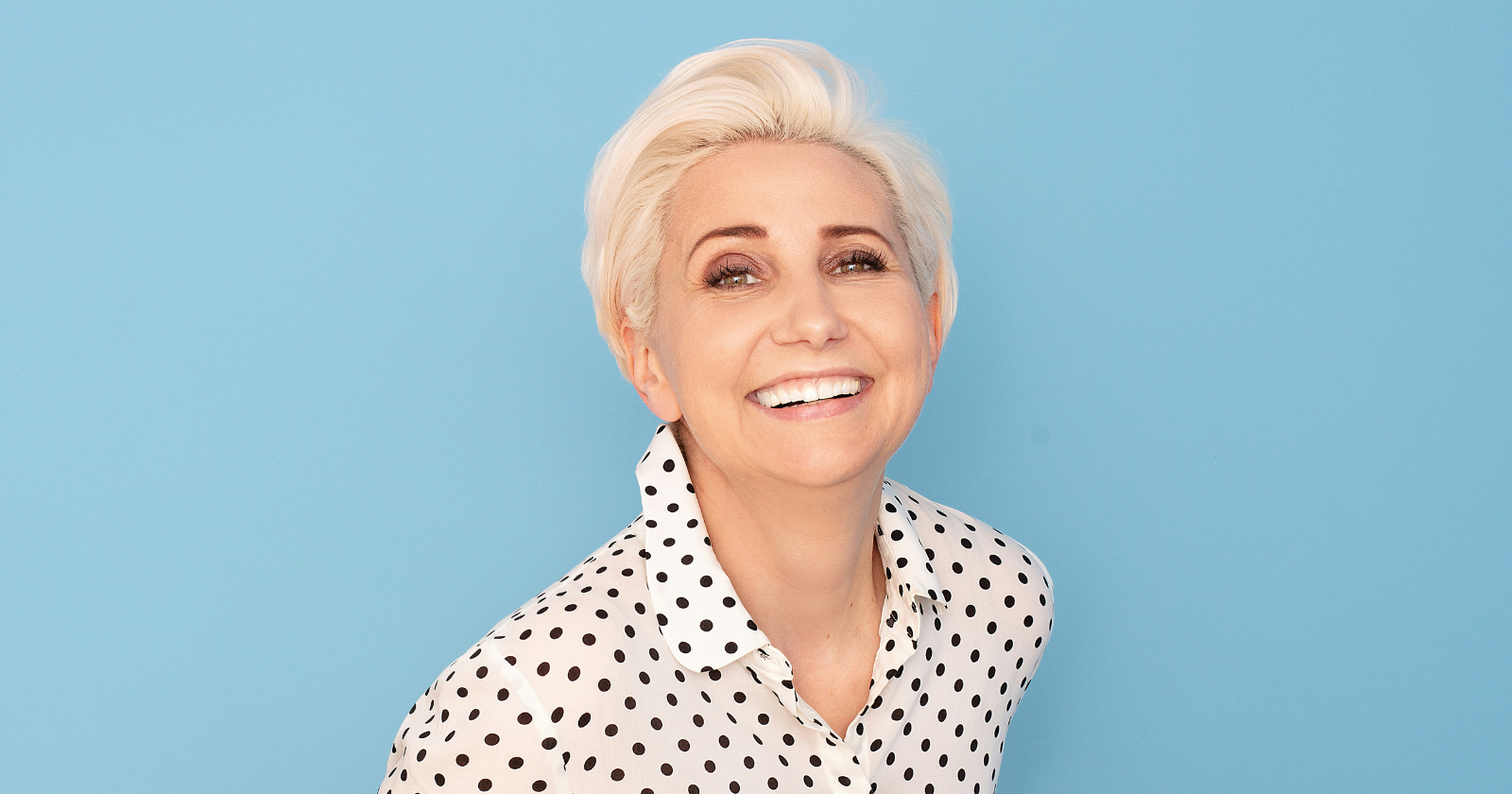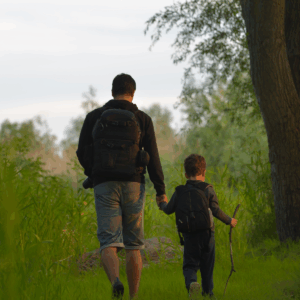Some people seem to glow more with each passing year.
Not in an airbrushed, impossible way—but in a quietly magnetic way you notice on walks, at family gatherings, even in the grocery line.
In my sixties, I’ve come to believe that the kind of beauty that deepens with age isn’t an accident. It’s a handful of daily habits that treat your face like the report card of your life.
Here are the ten I see again and again (and try to practice myself).
1. They hydrate like it’s a job
I used to treat water as something that happened to other people.
Then one summer I started keeping a big glass by the sink and—surprise—my skin looked less like a map and more like a memory.
Folks who get more beautiful with age don’t sip only when they’re parched. They preempt the desert.
A simple rule I use: a glass upon waking, one midmorning, one midafternoon, and one with each meal.
Add extra on the days you walk farther or talk longer. Your skin will thank you before your brain notices.
2. They walk almost every day (not for steps—for circulation)
I’ve said in a previous post that movement is the cheapest mood stabilizer I know. It’s also a fountain-of-youth trick that doesn’t feel like one.
A daily walk pushes fresh blood to your face, clears the fog behind your eyes, and helps posture from collapsing into “tech neck.”
Ten minutes counts. Twenty is better. Hills are a bonus.
My personal test is the mirror after a brisk loop around the park: less gray, more yes.
You don’t need a gym. You need shoes, weather, and a route you can do without thinking.
3. They protect their sleep like it’s sacred
Beauty sleep is real—and not just because puffiness packs its bags when you rest.
When I guard my bedtime, every other habit gets easier: food choices, patience, hydration, posture.
People who get better-looking with age respect a wind-down routine: dim lights, no doom-scroll, maybe a book or a warm shower.
- 7 powerful traits that make people naturally drawn to you in any situation - Global English Editing
- 7 critical actions to take immediately after a failure to ensure you bounce back - Global English Editing
- 7 fascinating ways dogs actually learn and retain information, backed by canine science - Global English Editing
They treat blue light like a thief, because it is.
If sleep is tricky for you (it is for me, some weeks), lower the bar: same sleep and wake window even when the night isn’t perfect.
Consistency beats heroics.
4. They eat color, crunch, and clean protein
The older I get, the more my face tattles on my plate. Highly processed “treats” make me look like I argued with a beehive.
Meanwhile, a day with greens, berries, olive oil, beans, fish, and nuts softens everything—from mood to jaw tension.
I’m not preaching; I still say yes to cake at birthdays. But day to day, people who age beautifully treat food like skincare from the inside out.
One simple anchor is “color + crunch + protein” on every plate. Add water and you’ve got a routine that outperforms fancy serums.
5. They practice daily micro-grooming
I don’t mean a full spa session.
I mean the boring, consistent little things: sunscreen every morning (even on cloudy days), gentle cleanser at night, a moisturizer that doesn’t smell like a fruit stand, lip balm in your pocket, hand cream by the sink, a soft brush for dry body brushing before a shower.
Five minutes, twice a day.
The trick isn’t a hundred products; it’s a tiny ritual you repeat until your future face sends you a thank-you note.
6. They hold themselves well (posture is the unseen facelift)
You can’t look vibrant if you’re shaped like a question mark. Daily posture checks cost nothing and change everything—how your clothes hang, the light in your eyes, the energy you project.
The older walker who looks “beautiful” often only has two secret weapons: stacked ribs over hips and a chin that isn’t hunting for the floor.
I set three posture anchors during the day: when I brush my teeth, when I make tea, and when I step outside.
Shoulders down, long neck, soft jaw, ribs gently knit. Then I forget about it—until the next anchor.
7. They manage stress in small, non-dramatic ways
Stress writes invoices on your face.
I see it in my jaw, my eyes, the way my skin gets dull when I let worries throw a party. The people who look better with age aren’t stress-free; they’re stress-literate.
They take micro-breaks. They breathe out longer than they breathe in. They walk around the block after a tense call. They say “no” more often and faster.
My two-minute rescue: four slow breaths in, six out, while I stare at a tree. It sounds ridiculous. It works. Calm is aesthetic.
8. They speak kindly to themselves (you can hear it in their face)
Self-talk shows up as softness around the eyes and mouth. I’ve never met a chronically self-critical person who looked luminous for long.
Beauty that lasts has friendliness baked into it—toward the mirror, toward mistakes, toward the day that didn’t go to plan.
Here’s my rule: if I wouldn’t say it to my granddaughter, it doesn’t belong in my head.
Swap “You look tired and old” for “You look like a person who’s lived—tea, then a walk.” That shift does more for your face than a fancy mask.
9. They keep small social promises
There’s a glow that arrives after a good conversation. I see it every week on the bench near the tennis courts—two neighbors, twenty minutes, news exchanged, laughter out of nowhere.
People who age beautifully tend to keep little commitments to connection: a regular call, a short walk, lunch with an old friend once a month.
It’s not the selfie; it’s the nervous system. Being seen—without performance—puts light back in your eyes. And those eyes do half the beauty work for you.
10. They create something tiny (and tidy something tiny)
The most attractive people I know in their sixties and seventies have a maker’s mark: they cook a soup, prune a plant, sketch a corner of the room, write five lines in a notebook, sew a button, learn a song.
Creation gives you that alive look. Pair it with closing a small loop—make the bed, clear the counter, fold the blanket—and the room reflects a bit of your inner order back at you.
Nothing fancy. Ten focused minutes, twice a day, makes you look like the kind of person who can be trusted with a sunrise.
That confidence reads as beauty before you’ve said a word.
How to weave these into a day without turning them into homework
I’m allergic to rigid routines. They crack at the first busy week. What works for me is a small template I can run on autopilot:
-
Morning (10–15 minutes): Water + stretch while the kettle boils, sunscreen after a quick cleanse, one line in a notebook about what would make today feel “well done.”
-
Midday (10 minutes): Walk the long way to lunch, posture check while waiting in any line, four-in/six-out breaths after a tense email.
-
Afternoon/evening (20 minutes): Color-crunch-protein plate, short social touch (text or call), a tiny tidy + a tiny make (chop veg for tomorrow; read a poem).
-
Night (5–8 minutes): Gentle cleanse, moisturizer, hand cream while I set out a glass of water for morning, lights down, book open.
If a day derails, I keep one anchor: the walk. Movement forgives many sins.
A small story from the park
There’s a woman I pass most mornings, somewhere in her seventies, who wears a sun hat like a crown and smiles at dogs like they’re diplomats.
She’s not “done up.” She’s alive. Once, at the fountain, I asked her secret. She laughed and said, “I do small things early so the day can’t steal them: water, walk, wash, and one person.”
Then she patted her hat and added, “And sunscreen—my stubborn friend.”
She looks more beautiful this year than last. Not because she fought time, but because she befriended it.
Common objections (and easy answers)
-
“I don’t have time.” Take five-minute versions. The trick is daily, not deluxe.
-
“I’m too old to start.” Your skin renews. Your muscles respond. Your nervous system learns. Start embarrassingly small.
-
“I hate routines.” Pick three anchors and let the rest be optional. Routines should feel like rails, not chains.
-
“I can’t afford expensive products.” You don’t need them. Water, sleep, sunscreen, a gentle cleanser, basic moisturizer, and whole foods will outrun fancy.
-
“My life is stressful.” All the more reason for micro-decompressors. Two minutes can change your face and your choices.
The short version you can keep on your phone
Hydrate. Walk. Sleep. Eat color, crunch, protein. Daily micro-grooming (sunscreen/cleanse/moisturize).
Posture checks. Micro-stress resets.
Kind self-talk. Keep one social promise. Make a small thing and close a small loop.
That’s it. Do these imperfectly and often, and the mirror becomes kinder because you are.
So—what’s the one habit you’ll plant today?
A glass of water by the sink, a ten-minute walk, or a simple “tea at 4?” on your calendar with a friend? Your future face is already rooting for you.



